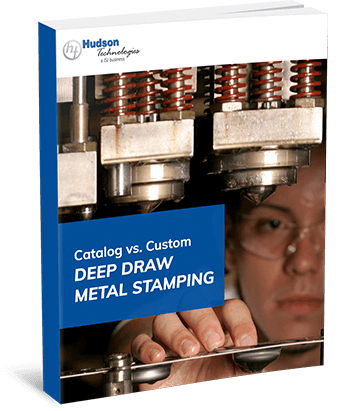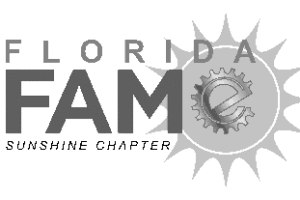Deep Draw Technical Considerations
- Home
- Metal Stamping FAQ (Farley Answers Questions)
- Deep Draw Technical Considerations
Many factors influence success or failure when considering a deep drawn case as an enclosure solution.
Deep drawn components can offer significant material cost saving over machined parts. While turned parts often retain less than 50% of the originating stock, the deep drawn process typically retains closer to 85%.
When exploring non-round shapes such as squares and rectangles, the inside corner and bottom radii are two of the most important factors to consider. Generally, there is a relationship between the desired material thickness and the requested corner radii.
The general rule is the material thickness times two, equals the smallest corner radius obtainable (larger corner radii are desirable and may reduce the amount of draws). Exceptions can be made with additional draw operations to further reduce the corner radii. Caution statement – increased material thinning and adjacent sidewall bow can occur in some cases.
Draft or taper are inherent to drawn cases. A small amount of draft is necessary in order for the case to strip off of the punch after the draw operation. This will render the can slightly smaller on the closed end inside and larger on the open end inside. Our standard draft is .001″ (.025mm) per inch of length.
Drawn cases also tend to have different material thicknesses throughout their length. The bottom of the can (closed end) is generally thicker than the sidewalls. Some materials have a tendency to thin or stretch more than others.
In some cases, depending on the particular requirements, the tooling may be designed to intentionally thin or “iron” the sidewalls beyond the natural tendency. This may add more dimensional stability and a produce a more aesthetically pleasing case.
Burrs occur whenever metal is cut, trimmed or pierced. A burr can be discussed as displaced, attached material beyond the flat plane that is perpendicular to that surface.
This is a result of the shearing and subsequent break of the material during the cutting/piercing process. Burr height and direction can be controlled with tooling clearances and punching direction. Our standard burr height is 10% of the pierced material thickness unless otherwise requested. Burrs can be removed through additional mechanical or chemical processes.
Work hardening, or cold working of material during the deep draw process, must be relaxed through a heatreat process known as annealing. This process occurs as an intermediate step during the forming and case reduction sequence.
Annealing is a specific temperature and atmospheric environment designed to relieve stress created from cold working. Each metal type has a unique recipe of time, temperature, atmosphere, and cool down rate.
Atmosphere refers to the gaseous environment used in a vacuum or forced flow furnace. Common atmospheres are Hydrogen, Nitrogen and Argon. Selected gases generally prevent oxidation of the parts and provide an intergranular cleansing.
Due to the criticality of the annealing process, Hudson Technologies heat treats its parts in-house when applicable.




























